Affiliate links on Android Authority may earn us a commission. Learn more.
5 MediaTek technologies you may have missed
Published onOctober 6, 2015
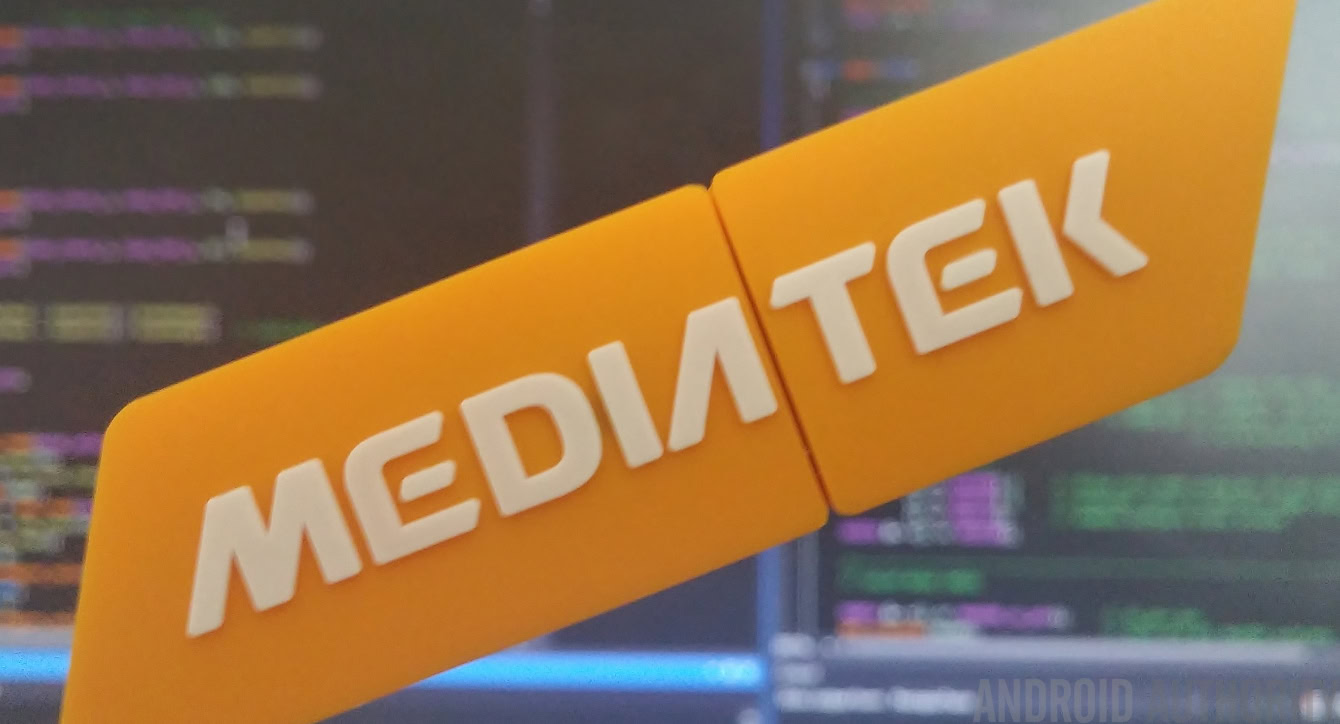
MediaTek may be most well-known for multi-core mobile system-on-a-chips and its notable share in the mid-range smartphone market. But much like its rival Qualcomm, MediaTek has been building up a selection of extra features and technologies that complement its growing mobile SoC portfolio. Here is a collection of the most important ones that you may have missed.
1 – CorePilot 3.0
Before we delve into the non-CPU related goodies, one of MediaTek’s big announcements this year was its deca-core Helio X20 mobile SoC. Although the core count may have made the headlines, MediaTek’s CorePilot 3.0 technology is the really interesting bit of technology working behind the scenes to make the chip a reality.
If you follow your processor technology, you’re probably familiar with the term Heterogeneous Multiprocessing. If not, it refers to the concept of balancing different processing workloads across cores with different processing capabilities. With mobile chips we are talking ARM’s big.LITTLE technology, which makes use of powerful and efficient CPU cores for an optimized balance between performance and energy consumption.
Unlike dual-cluster big.LITTLE chips like the Snapdragon 810 or Exynos 7420, MediaTek’s Helio X20 uses three CPU clusters, nicknamed Max.Mid.Min. To manage each of these clusters, the company created its CorePilot 3.0 system.
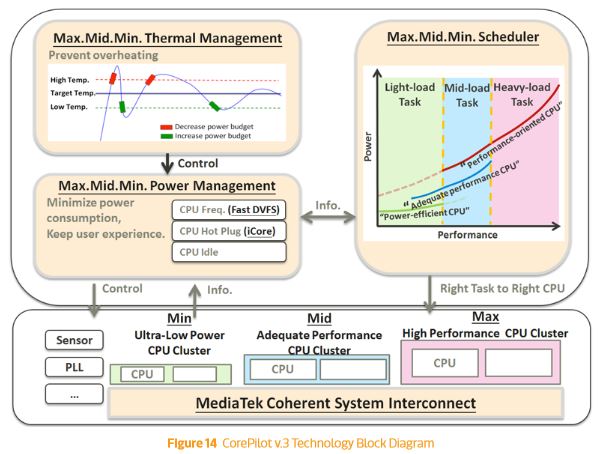
This system makes use of familiar power management features, including iCore power gating, a fast core voltage and frequency scaling system that is 40 percent faster than previous implementations, and thermal budget constraints. The MediaTek Coherent System Interconnect (MCSI) supports low latency high throughput hardware coherency among heterogeneous processing clusters, while the scheduler is charged with assigning tasks to the most appropriate CPU cores.
Overall, MediaTek boasts that its Max.Mid.Min design uses less power than traditional big.LITTLE SoC designs across a wide range of common use applications. This type of technology could be the evolution of power efficient mobile SoCs.
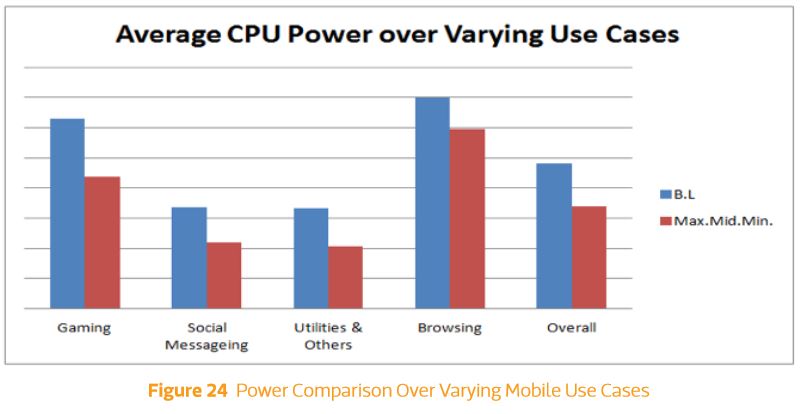
2 – Imagiq
Smartphone cameras have been a major focal point this year and MediaTek has been working on its own technology to support new features and improve the look of your snaps.
MediaTek is boasting DSLR-like photo experiences with its new SoCs that use its Imagiq technology. More natural colors, better low light detail, and HDR are all promised with its new ISP algorithms.
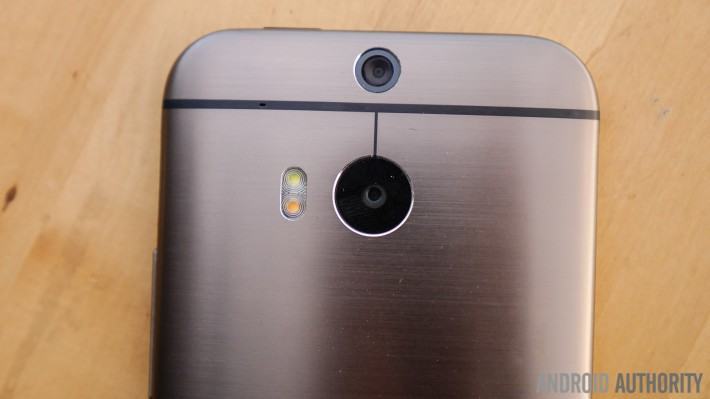
The chip’s ISP also now supports dual image sensor setups, a feature seen in a number of previous smartphones, to allow for greater depth of field effects, with apertures down to lower than f/1.0, compared with current flagship limits at around f/2.0.
Imagiq also supports MediaTek’s PIXEL-LEVEL auto focus system, which promises 4 times the speed of traditional auto-focusing systems if the OEM uses supported hardware. MediaTek also lays claim to being the first SoC to support dual phase-detect auto focus, which splits sensor pixels down into two parts, one phase focus detector and one part traditional light sensor.
3 – MiraVision 2.0 & BLULight Defender
Displays are an equally important part of a finished mobile product, and MediaTek has been working on an improved suite of display technologies with MiraVision 2.0. These little tweaks might be tough to notice running in the background, but they range from dimming the display light for easier reading even in low-light through to HDR video re-mapping.
MediaTek’s BLULight Defender is one of the particularly interesting features. It is designed to reduce the amount of Blue Light energy output from a display, while still maintaining suitable image color quality. The built-in filter also saves on power compared with using a software implementation.
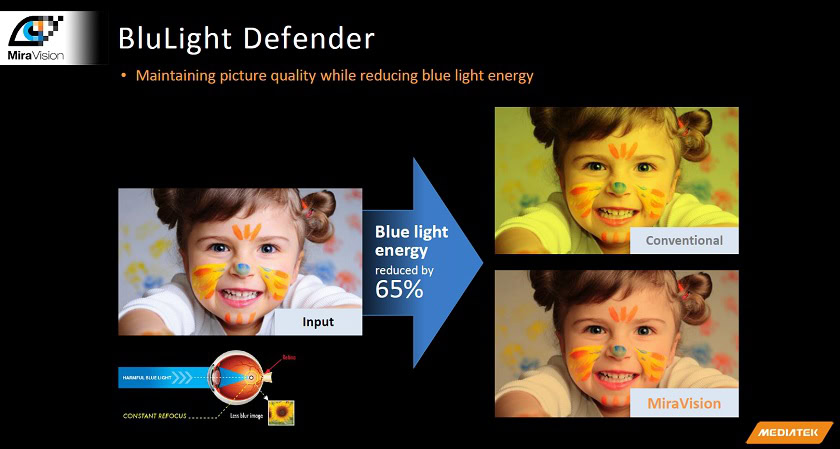
Certain blue light wavelengths can damage our vision over long periods of time and the prevalence of LED displays is increasing our exposure to it. Display and device manufacturers aim to help protect our vision by tweaking the display’s color balance to reduce the amount of blue light. MediaTek claims that its BLULight Defender reduces blue light energy by around 65 percent, with minimal color distortion or contrast lost.
MiraVision 2.0 also features some advanced up-scaling algorithms for higher resolution displays that make use of techniques like sharpening in an attempt to boost visual quality and detail of lower resolution content. Adaptive Picture Quality complements this by tweaking the display’s color to match the content being display, such as increasing color vibrancy when watching video.
4 – Deep Learning
Regular readers may be sick of hearing me mention Heterogeneous Compute, but MediaTek is also quite a fan of this topic and is working on ways to use all the little processing parts of your smartphone to help with Deep Learning.
Deep Learning essentially means that your smartphone, tablet or computer can use algorithms to learn from various pieces of data. This can then be interpreted and used to provide useful services to the user. As well as intelligent cloud based networks, MediaTek is also looking at secure, on device implementations that can handle and learn from more sensitive pieces of data.

For example, MediaTek suggests that its Deep Learning algorithms could be used to recognise your family members from pictures, which could have useful implications ranging from automatic tagging and sharing to secure mobile payments. The system could also be used for speech recognition or object detection in the automotive industry.
MediaTek is developing a Deep Learning SDK middle layer, which will make use of Heterogeneous Compute hardware available in smart devices. This will allow your device’s CPU, GPU, DSP and ISP to be used and optimized for various processing functions.
5 – CrossMount
MediaTek is looking beyond traditional mobile devices too, with a focus on smarter, connected devices forming a core part of its future plans. The company’s upcoming CrossMount technology aims to make the most of all of the gadgets in your home through content and service sharing.
At its most basic level, CrossMount will allow for content sharing across a wide range of support devices. Examples include sharing pictures from your phone to TV, move a show you’re watching from one device to another, or sending out audio from one device to the speakers in your home.
“CrossMount goes the extra mile with hardware and software capability sharing between smart devices, thereby creating many useful and more complex use cases, such as mounting a smartphone camera to a TV and enabling the TV for video conferencing session.” – Joe Chen, Senior Vice President, MediaTek.
The more complicated end goal is to share a wide range of hardware and software resources across a whole range of consumer electronics. Your TV could make use of GPS data from another device, voice commands on your smartwatch could control the content on your TV, or hands-free phone calls can be transferred to any other device’s speakers.
CrossMount is based on the UPnP protocol and simply uses your home WiFi network or WiFi Direct to sync up between devices. The CrossMount Alliance has been set up to provide support to third party developers and the technology is scheduled to arrive in consumer devices come late 2015/early 2016.
Wrap Up
With a growing number of smartphone’s powered by its processors, an increasingly robust feature set and some exceptional performance per buck, MediaTek is looking well positioned to take on new markets in 2016. Of course, many of its rivals are gearing up their own new technologies for mobile, wearables and the internet of things too.
Keep an eye out for these technologies and more if you pick up a MediaTek powered device in the future.